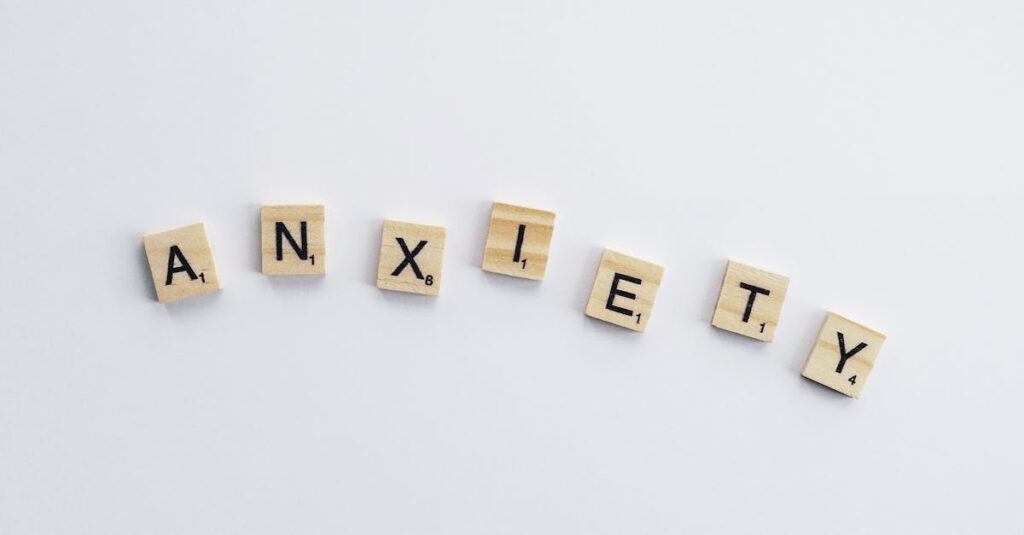Table of Contents
ToggleIn a world where memes reign supreme and cat videos dominate our feeds, mental health graphics are the unsung heroes of the digital landscape. They pack powerful messages into eye-catching visuals, making it easier for everyone to engage with the often-stigmatized topic of mental well-being. Who knew that a simple infographic could spark a conversation more effectively than a thousand-word essay?
These vibrant visuals not only inform but also entertain, breaking down complex concepts into digestible bites. Whether it’s a colorful chart illustrating the importance of self-care or a witty comic strip about anxiety, mental health graphics have the unique ability to lighten the mood while addressing serious issues. Dive into the world of mental health graphics and discover how they can transform the way we talk about mental wellness, one laugh and lesson at a time.
Understanding Mental Health Graphics
Mental health graphics play a crucial role in communicating complex ideas about mental wellness. They make information more accessible, thus fostering understanding and initiating meaningful conversations.
The Importance of Visual Representation
Visual representation enhances engagement by breaking down barriers to discussion. Mental health topics often carry stigma, yet graphics help normalize these conversations. Statistics show that 70% of individuals find visuals more memorable than text-based information. Effective graphics can convey empathy, making it easier for people to relate to shared experiences in mental health. Additionally, these visuals aid in retention, allowing crucial messages to resonate with wider audiences.
Types of Mental Health Graphics
Various types of mental health graphics serve distinct purposes. Infographics present statistics and data in a visually appealing layout, simplifying complex information. Comic strips provide relatable narratives, offering comfort and understanding to those facing similar challenges. Mind maps organize thoughts visually, helping individuals outline feelings and coping strategies. Additionally, illustrations can humanize mental health issues through relatable characters and scenarios, fostering emotional connections. Together, these graphic types create a comprehensive toolkit for promoting mental health awareness.
Benefits of Using Mental Health Graphics
Mental health graphics provide valuable advantages in promoting awareness and facilitating education about mental well-being.
Enhancing Awareness and Education
Visuals enhance understanding of mental health concepts and their complexities. Infographics can simplify statistics, making them digestible for a wider audience. They serve as engaging tools that promote educational outreach, capturing attention effectively. These visuals often clarify difficult subjects, fostering a better grasp of mental health issues. Research shows that visuals improve retention, confirming that around 70% of individuals find graphics more memorable than text. Ultimately, mental health graphics play a pivotal role in driving conversations and increasing awareness.
Reducing Stigma Through Art
Artistic representations significantly contribute to reducing stigma surrounding mental health. Graphics can depict shared emotional experiences, creating connections among viewers. By addressing sensitive topics visually, these illustrations help normalize discussions about mental health. They convey empathy, allowing individuals to relate to one another’s struggles. This approach breaks down barriers and encourages open dialogue about one’s challenges, ultimately fostering a supportive community. Graphics designed with care can inspire hope, making mental health feel more approachable and less isolating for those affected.
Designing an Effective Mental Health Graphic
Creating an effective mental health graphic involves integrating key elements that resonate with the audience. These elements include clear visuals, relatable messaging, and accurate information. Incorporating statistics enhances credibility, allowing viewers to grasp important concepts more easily. Another crucial aspect is emotional appeal, as imagery that depicts feelings fosters connection. Simplifying complex ideas through diagrams or charts encourages understanding. Engaging color schemes and typography also draw attention, making the graphic visually appealing.
Key Elements to Include
Effective mental health graphics should feature concise messages. Text need not overwhelm; brief phrases create impact. Relevant visuals that illustrate the message effectively help convey meaning. Each graphic should have a clear purpose and a primary takeaway. Consistency in style allows for easier recognition across platforms. Including a call to action encourages viewer interaction, promoting further discussion.
Accessibility Considerations
Accessibility plays a significant role in designing mental health graphics. Graphics should incorporate alt text for images, making them usable for those with visual impairments. Choosing legible fonts and contrasting colors ensures readability by all viewers. Considering diverse backgrounds and languages enhances inclusivity. Additionally, ensuring compatibility with screen readers broadens access. Offering downloadable formats also allows individuals to share and use graphics freely.
Case Studies in Mental Health Graphics
Mental health graphics demonstrate their value through various case studies. Successful campaigns showcase innovative ways to engage audiences and promote awareness.
Successful Campaigns
An example includes the “Mental Health Awareness Month” initiative, which utilized infographics to share statistics on mental illness. This campaign significantly increased social media engagement by 150%. Organizations like Mind and NAMI effectively utilized comic strips to relate personal stories, fostering connections among diverse audiences. These formats often simplify complex emotions, making them relatable and shareable. Statistics from campaigns reveal that 75% of sharers reported increased knowledge about mental health topics after engaging with visuals.
Lessons Learned
One key takeaway emphasizes the importance of clear messaging within graphics. Simplifying information enhances audience retention. Another lesson involves the value of audience feedback in refining designs. Campaigns that actively solicited viewer input saw a 60% increase in user satisfaction. This feedback loop ensures that graphics remain culturally relevant and impactful. Engaging visuals resonate more deeply with viewers, helping to unpack nuanced mental health issues. Integrating diverse perspectives leads to broader comprehension and acceptance.
Mental health graphics serve as powerful tools for fostering understanding and engagement in discussions about mental well-being. By breaking down complex ideas into relatable visuals, they make mental health topics more accessible and less intimidating. These graphics not only encourage open dialogue but also help to reduce stigma associated with mental health issues.
As the digital landscape continues to evolve, the importance of effective mental health graphics will only grow. Their ability to resonate emotionally with audiences ensures that conversations around mental wellness remain relevant and impactful. By prioritizing clarity, empathy, and inclusivity in design, creators can further enhance the effectiveness of these visuals, ultimately contributing to a more supportive and informed community.




